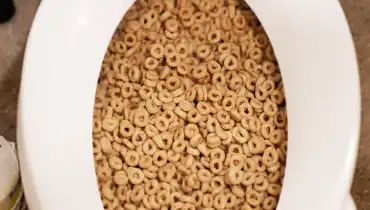Can You to Flush Food Down the Toilet?
Can You to Flush Food Down the Toilet?
Blog Article
They are making a number of great pointers regarding What Can Happen If You Flush Food Down the Toilet? in general in this content directly below.

Intro
Many people are commonly confronted with the dilemma of what to do with food waste, especially when it concerns leftovers or scraps. One typical question that occurs is whether it's alright to purge food down the bathroom. In this post, we'll delve into the reasons individuals may consider purging food, the effects of doing so, and different techniques for correct disposal.
Reasons why people might think about flushing food
Lack of understanding
Some individuals may not be aware of the potential injury triggered by purging food down the toilet. They may mistakenly think that it's a safe practice.
Comfort
Flushing food down the bathroom may appear like a fast and very easy service to disposing of unwanted scraps, particularly when there's no close-by garbage can available.
Laziness
In some cases, individuals might simply pick to flush food out of sheer laziness, without taking into consideration the repercussions of their actions.
Effects of flushing food down the bathroom
Ecological impact
Food waste that winds up in rivers can contribute to air pollution and damage marine communities. In addition, the water used to purge food can stress water resources.
Plumbing problems
Flushing food can bring about blocked pipelines and drains, triggering expensive pipes repairs and hassles.
Kinds of food that ought to not be flushed
Fibrous foods
Foods with fibrous structures such as celery or corn husks can get entangled in pipes and cause obstructions.
Starchy foods
Starchy foods like pasta and rice can soak up water and swell, leading to clogs in pipes.
Oils and fats
Greasy foods like bacon or food preparation oils must never be flushed down the commode as they can solidify and trigger clogs.
Appropriate disposal approaches for food waste
Utilizing a waste disposal unit
For homes furnished with garbage disposals, food scraps can be ground up and flushed with the pipes system. Nonetheless, not all foods are suitable for disposal in this manner.
Recycling
Specific food packaging materials can be reused, decreasing waste and minimizing ecological impact.
Composting
Composting is an environment-friendly means to throw away food waste. Organic materials can be composted and used to enrich dirt for gardening.
The relevance of appropriate waste monitoring
Reducing ecological injury
Appropriate waste monitoring techniques, such as composting and recycling, help minimize contamination and preserve natural resources for future generations.
Shielding pipes systems
By staying clear of the technique of flushing food down the commode, home owners can prevent costly plumbing repair work and maintain the stability of their plumbing systems.
Verdict
To conclude, while it may be alluring to flush food down the bathroom for convenience, it is very important to recognize the prospective repercussions of this activity. By embracing appropriate waste monitoring techniques and disposing of food waste properly, individuals can contribute to healthier plumbing systems and a cleaner atmosphere for all.
FLUSH FOOD DOWN THE TOILET?
FLUSHING FOOD CAN CAUSE BLOCKED DRAINS IN YOUR HOME
All of the plumbing fixtures in your home are connected to the same sewer pipe outside of your home. This outdoor sewer pipe is responsible for transporting all the wastewater from your home to the Council sewer mains. Even small pieces of food that go down the kitchen sink can cause problems for your sewer. It should therefore be obvious that flushing larger bits of food, such as meat, risks a clog in either the toilet itself or the sewer pipes. Flushing greasy food is even more problematic because oil coagulates when it cools, coating the interior lining of your pipes.
THE TOILET IS NOT A BIN
Food isn’t the only thing that people shouldn’t be flushing down the toilet. People use the toilet to dispose of all kinds of things such as tampons, makeup wipes, dental floss, kitty litter and even underwear. Water goes to great lengths to educate residents about the high costs and stress placed on wastewater treatment systems simply from people flushing the wrong stuff down the toilet. It costs taxpayers millions of dollars each year, and homeowners thousands in blocked drain repairs.
FLUSHING FOOD IS A WASTE OF WATER
Flushing food is a waste of our most precious resource - water. In June this year Level 1 water restrictions were introduced to protect water supply from drought conditions. Much of New South Wales continues to be affected by prolonged drought with recent figures revealing up to 97 per cent of the state remains in drought. Depending on whether you have a single or dual flush toilet, every single flush uses between five and 11 litres of water. In the current climate this is a huge amount of water to be wasting on flushing food that should be placed in the bin (or better yet, the compost).
https://www.jabplumbingsolutions.com.au/blog/can-you-flush-food-down-the-toilet

We had been made aware of that report about Flushing Food Down the Toilet? from someone on our other web page. Liked our piece of writing? Please share it. Let other people check it out. I am grateful for your time. Kindly stop by our blog back soon.
Make An Appointment Report this page